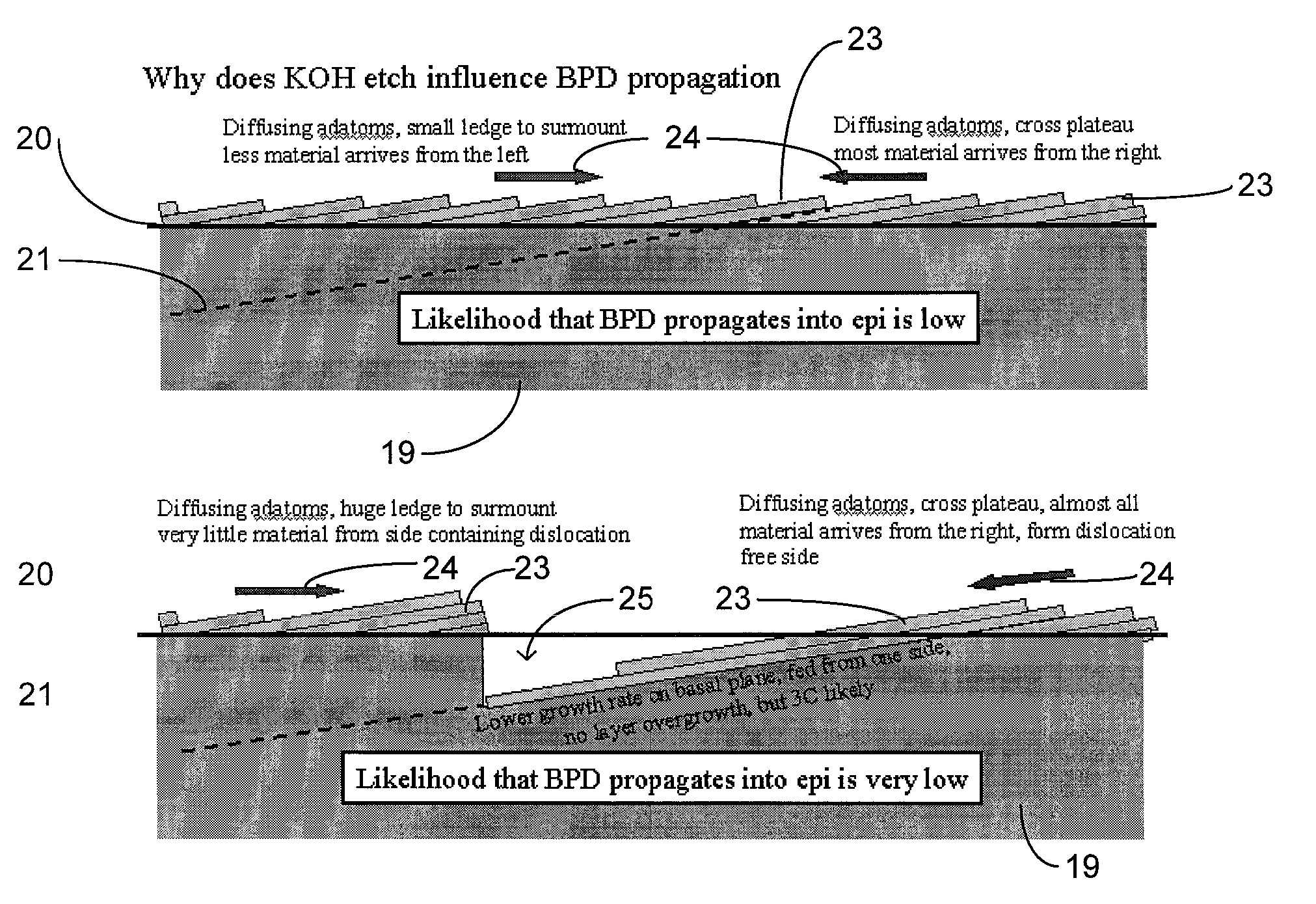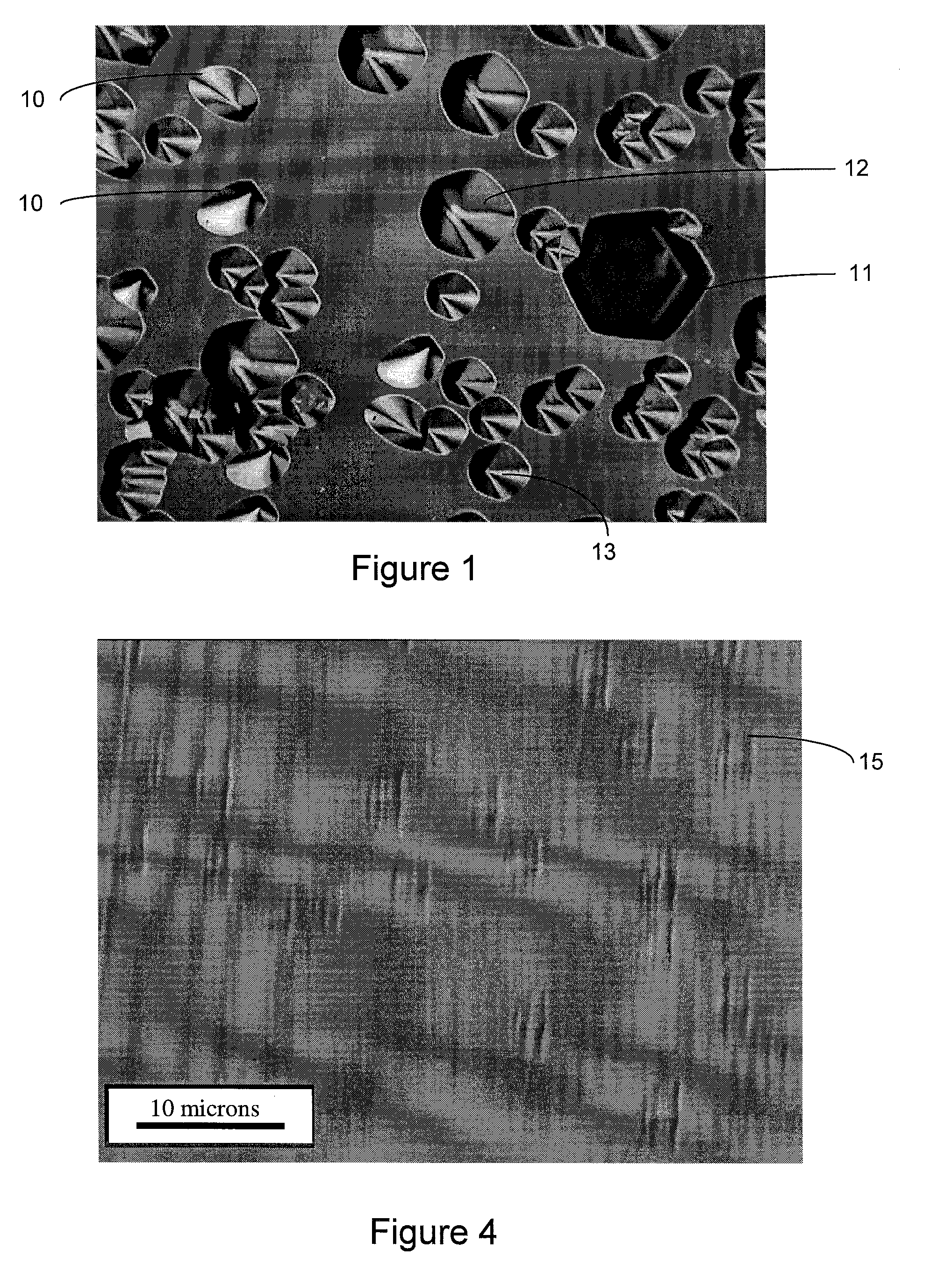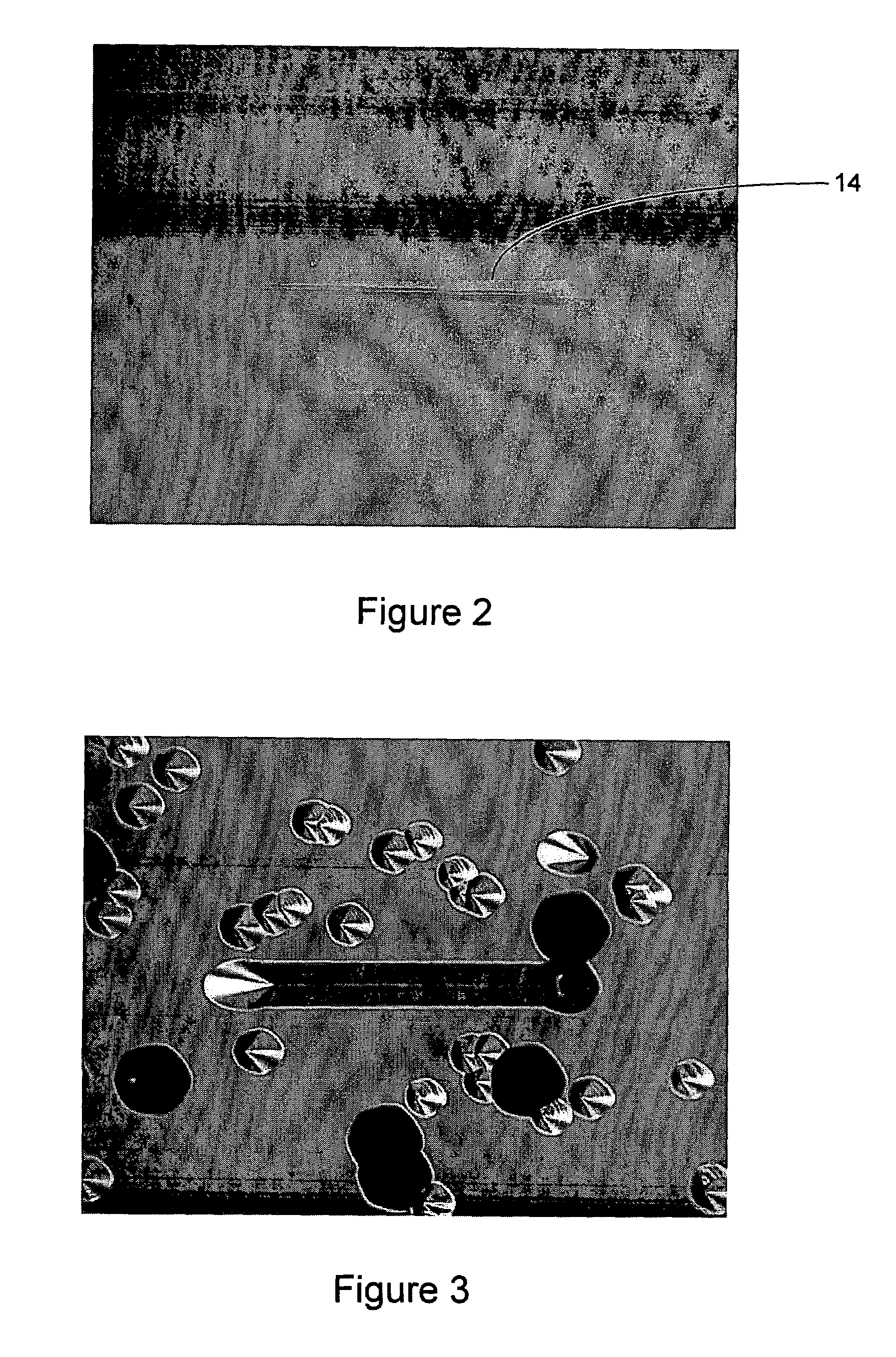Method to reduce stacking fault nucleation sites and reduce forward voltage drift in bipolar devices
a bipolar device and stacking fault technology, applied in the direction of cleaning process and apparatus, semiconductor devices, chemistry apparatus and processes, etc., can solve the problems of difficult growth into large single crystals, difficult to produce silicon carbide, and high melting point of silicon carbide, so as to reduce the number of subsurface defects, reduce the number of stacking fault nucleation, and reduce the number of forward voltage drift
- Summary
- Abstract
- Description
- Claims
- Application Information
AI Technical Summary
Benefits of technology
Problems solved by technology
Method used
Image
Examples
Embodiment Construction
[0033]The invention is a method of preparing a substrate for reducing stacking fault nucleation and reducing forward voltage (Vf) drift in silicon carbide-based bipolar devices.
[0034]In a first embodiment the method initially comprises conducting a non-selective etch, preferably a dry etch, most preferably a reactive ion etch (RIE), on the surface of a silicon carbide substrate to remove both surface and sub-surface damage that typically results from the sawing and lapping of the extremely hard SiC material. As known to those familiar with the manufacture of electronic devices, a nonselective etch removes all material at an equal rate. A selective etch removes specific materials e.g. damaged, n-type, p-typemore quickly than the other materials. Exemplary, but not limiting, techniques for dry etching of silicon carbide are set forth in U.S. Pat. No. 4,865,685 and its sibling U.S. Pat. No. 4,981,551 the contents of which are incorporated entirely herein by reference. Other techniques ...
PUM
| Property | Measurement | Unit |
|---|---|---|
| depth | aaaaa | aaaaa |
| temperature | aaaaa | aaaaa |
| melting point | aaaaa | aaaaa |
Abstract
Description
Claims
Application Information
 Login to View More
Login to View More - R&D
- Intellectual Property
- Life Sciences
- Materials
- Tech Scout
- Unparalleled Data Quality
- Higher Quality Content
- 60% Fewer Hallucinations
Browse by: Latest US Patents, China's latest patents, Technical Efficacy Thesaurus, Application Domain, Technology Topic, Popular Technical Reports.
© 2025 PatSnap. All rights reserved.Legal|Privacy policy|Modern Slavery Act Transparency Statement|Sitemap|About US| Contact US: help@patsnap.com



